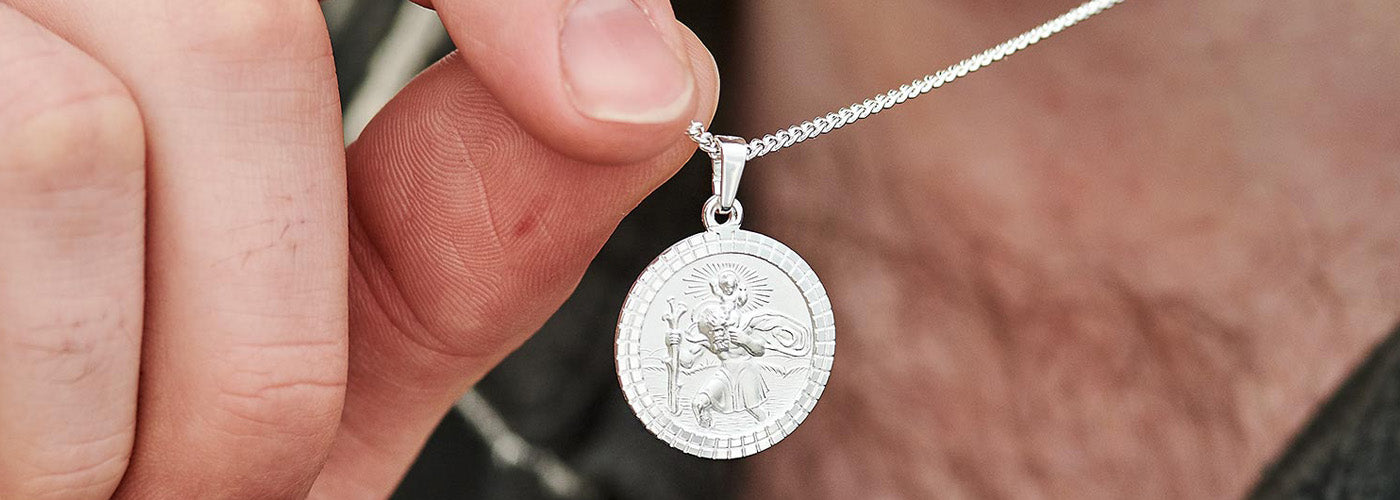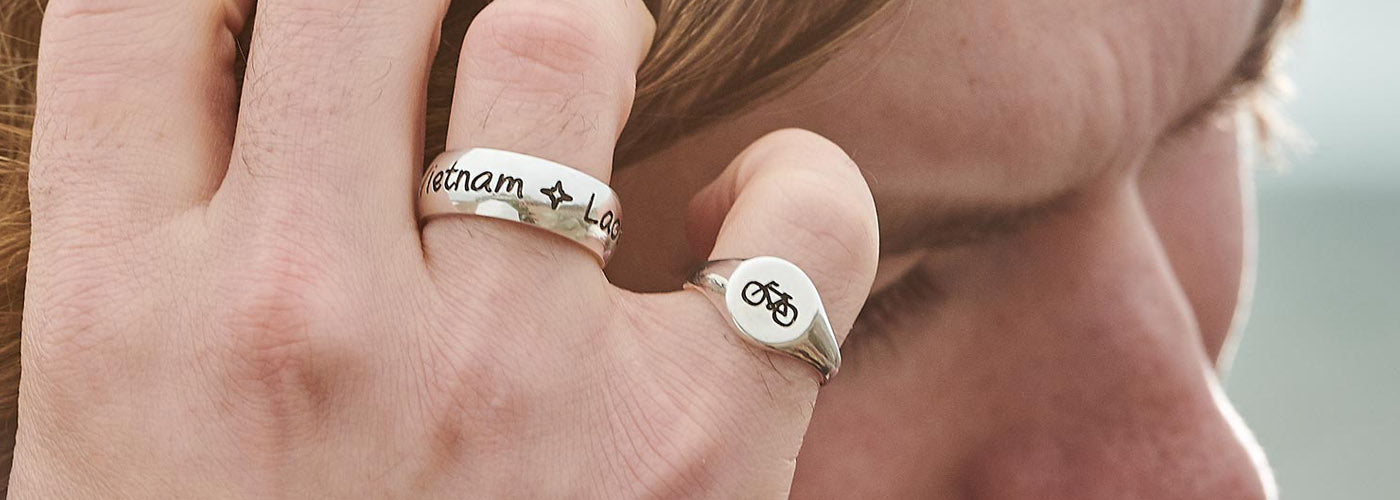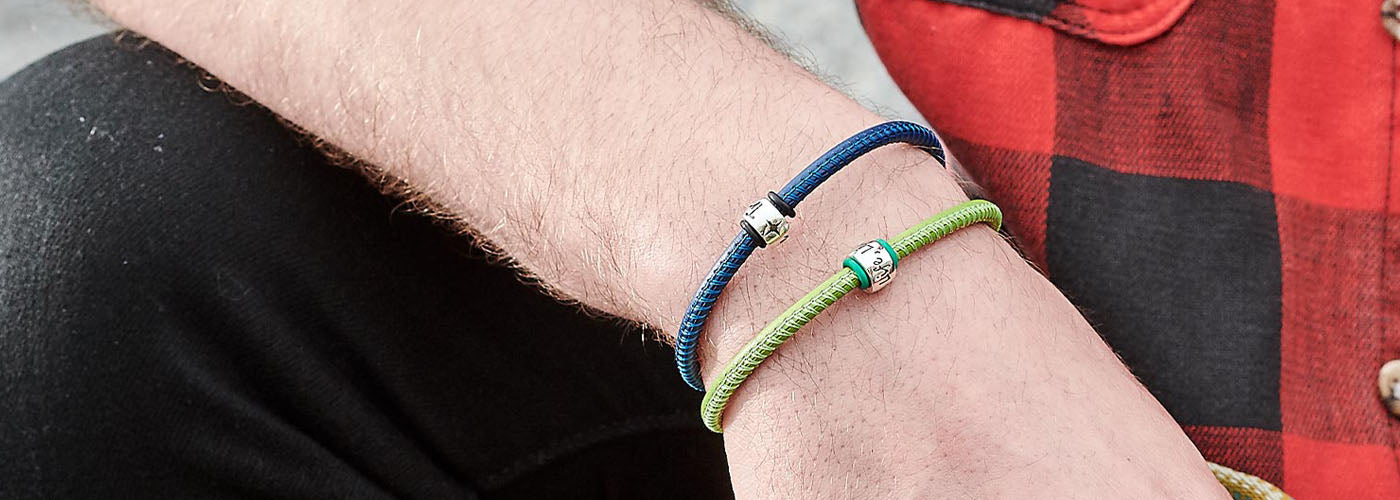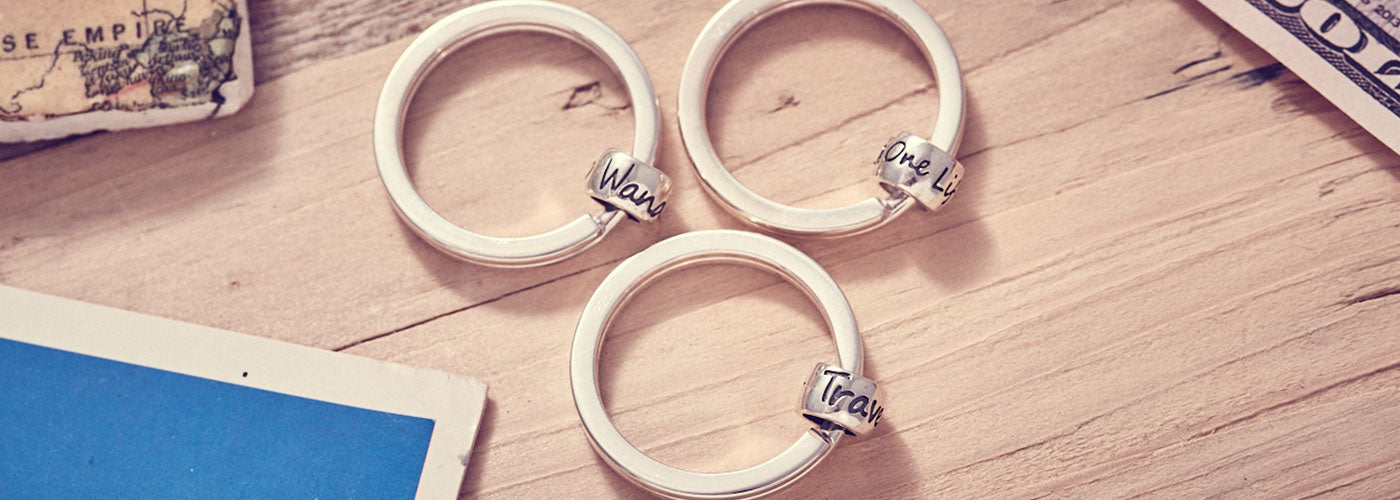Every culture has its own superstitions to stay on the right side of fate.
In the Mediterranean, people ward off the misfortune of the evil eye with a Nazar amulet. In India, they hang chillies and lime outside their doors to keep out the Hindu goddess of misfortune. Mirrors are used in China to frighten evil spirits and so many more! In Catholicism, a Saint Christopher pendant is used for good luck when travelling. These also make a cool travel gift for him or her!

Lucky charms are the best way to ward off bad luck and misfortune when travelling. Travelling can be daunting! Stepping into the unknown with new challenges and risks is scary. There are so many things that could potentially go wrong.
This is why so many people won't travel without a lucky talisman to bring them luck and safety. With a little bit of faith, a lucky travel charm can give you and your family the faith that you will travel and return home safely.
Continue reading to learn about common travel superstitions and why you should be travelling with a lucky charm! Discover different types of travel charms from various cultures that you can carry with you on your next journey!
Travel superstitions
Humans have always been very superstitious creatures and still are to this day! Travelling is no stranger to superstitions. There are a number of superstitions that people take very seriously when going on a trip.
Travelling is outside of your everyday life and routine which can be anxiety-inducing for many people who ponder what could possibly go wrong.
Turning to superstitions can help ease the nerves and give you faith that everything will go according to plan. Superstitions include carrying a travel talisman, choosing the right flight number, room numbers, travel dates and other location-dependent rituals.
Here is a round-up of the most well-known travel superstitions:
Carrying a travel charm like a Saint Christopher pendant
Saint Christopher is a Catholic Saint. He is the patron saint of travellers, drivers, sailors, storms and gardeners.
A Saint Christopher pendant is a traditional and iconic travel charm that you can wear during your travels.
Many people believe in luck and the power of carrying lucky charms. Carrying a travel charm like a Saint Christopher pendant is a declaration of good luck.
Wearing a Saint Christopher charm is a request for his blessings and good luck. People believe that he helps to ward off misfortunes such as accidents, robberies and poor health when you are travelling. A St Christopher pendant is a good gift for travelling abroad and for frequent flyers.
If you’re wondering what to get someone who loves travelling as a gift, this is an amazing small travel gift for him or her.

Avoiding unlucky numbers
The number 13 is the most traditional bad luck number that is avoided by superstitious travellers. People will avoid staying on the 13th floor (some hotels don’t even have a 13th floor!), staying in room 13 and flying on the 13th.
Other numbers like 666 and 911 are associated with bad luck due to their negative connotations and are also avoided.
Airport rituals
The airport is one of the most superstitious places when it comes to travel. Airports and flying can be one of the most anxiety-inducing aspects of a trip, especially if you are afraid of flying.
There are many superstitions associated with the airport to ensure you survive your flight. These include kissing the ground when you land, stepping onto the plane with the same foot each time and avoiding certain flight numbers and dates.
Airports also have their own superstitions to avoid accidents as well. For example, planting an evergreen tree on the top of the control tower. This custom originates from Scandinavia, where it’s believed placing a cedar tree on the top of a building brings good luck.
Sailing superstition
Understandably travelling by sea comes with a whole host of superstitions.
Sailing in a boat that is unnamed is said to bring terrible luck. It’s also bad luck to travel on a boat whose name ends in “A”. This likely stems from the demise of the Lusitania and Brittania ships during WWII.
You are also supposed to avoid travelling on boats that have had their name changed.
Destination superstitions
Some famous places around the world have lucky rituals you can participate in for good luck or to make a wish.
One of the most famous spots for this is at the Trevi Fountain in Rome. Throwing a coin in the Trevi Fountain ensures you will one day return. Visitors to Ireland can plant a kiss on the Blarney Stone in Castle Blarney to be endowed with eloquence and good fortune in matters of persuasion.

So what exactly is a lucky travel charm?
A travel charm is something you carry with you when you are on the road to bring you protection and good luck. You can get a travel charm for yourself or buy one as a going-away gift for Christmas or as a birthday present for someone in your life who loves to travel.
Many people around the world believe in superstitions and the power of carrying a lucky charm wherever they go. Carrying a travel charm is a declaration of good luck and faith that you will travel and return home safely.
Many travel charms, like the St Christopher pendant, have religious origins. But whatever your beliefs there is a lucky travel charm for you. You can buy one, find one, make one or receive one as a gift. All you need to do is have faith and believe it works!

Reasons why you should carry a lucky travel charm
There are many reasons to travel with a travel charm. Whether you are worried about your plane crashing, being involved in a terror attack or something as simple as losing your wallet, carrying a travel charm can give you faith that you have luck on your side!
A travel charm gives courage and confidence to take on the world without fear, even if you don’t fully believe in occult powers!
Lucky travel charms are designed to attract positive circumstances, people and objects in your life on the road. This includes protection from mishaps just as accidents, theft and sickness, amazing people and wonderful adventures while travelling. With good intentions, lucky charms boost the notion of good luck on your travels.
Getting someone a gift for good luck for their travels is very common with so many people travelling and living overseas today. Lucky travel charms make an amazing gift to wish someone a safe journey and return home.
People who can really benefit from carrying a lucky travel charm include:
- People on a gap year
- Business travellers
- People who have long daily commutes
- People living and working abroad
- Long term backpackers
- People travelling to more dangerous countries
- Anyone who is stepping onto a plane bus or train to take a trip no matter how long or short.

Types of lucky travel charms
There is a wide variety of lucky travel charms, there is something that will suit any traveller. Travel talismans can come in the form of rocks and stones or gems and crystals, feathers, animal claws and shark teeth.
More modern travel charms include jewellery like rings, necklaces and bracelets and random good luck objects like a soft toy or a certain pair of socks.
Different countries and religions have their own unique travel charms.
Here is a breakdown of some of the most well-known travel charms from around the world:
- St. Christopher Pendant, Catholicism: St Christopher pendants are traditionally associated with travels. St Christopher is the patron saint of travellers and is known as the Saint who carried Christ, and therefore the weight of the world, safely across a river. The St. Christopher pendant remains one of the most popular lucky charms for travellers. There are many different designs and styles of Saint Christopher pendants available. Check out the extensive range of silver men’s and women’s St Christopher pendants (& other lucky travel charms) at Off The Map Jewellery. They make a great luxury Christmas gift for him or her.
- Nazar & Hamsa: Mediterranean and Middle Eastern countries carry the Nazar or Hamsa symbol to ward off the misfortunes brought by the evil eye.
- Pyanska (Egg), Ukraine: This is a painted Easter egg from the Ukraine which is believed to bring luck.
- Pimenta, Brazil: A Pimenta is a charm made out of glass chillies and can be worn as a necklace to bring luck.
- Kavacha, India: A Kavacha is a necklace which has a prayer scroll or water from the Ganges inside which give this amulet protective powers.
- Ganesha amulet, India & Thailand: Ganesha is the remover of obstacles and therefore wearing him can ensure your trip runs smoothly.
- Horseshoe, USA: A horseshoe is a traditional symbol of good luck in the west. Keep it pointed up to stop luck from spilling out or pointed down to let the luck flow.
- Dream catcher, The Americas: The dreamcatcher is a protective talisman that is used to protect people from nightmares and bad dreams. It can also be worn on a keyring or in hanging in your car to bring luck on your travels.
- Four-leaf clover, Ireland: One of the most famous symbols for luck around the world is the four-leaf clover from Ireland
- Fish hook (Hei-Matua), New Zealand: The fish hook represents prosperity, abundance, fertility and strength. Hei-Matua is a symbol of power and authority. Hooks are also good luck charms, particularly for those travelling over water.
- Star of David, Judaism: The Star of David is the most powerful talisman for Jewish people

When it comes to travelling there are so many steps you can take to keep happy, safe and to have luck on your side. Travelling with a lucky travel charm is just one of them!
For a lucky travel charm to work all you need is the belief that it will work and it does. Just like magic!









